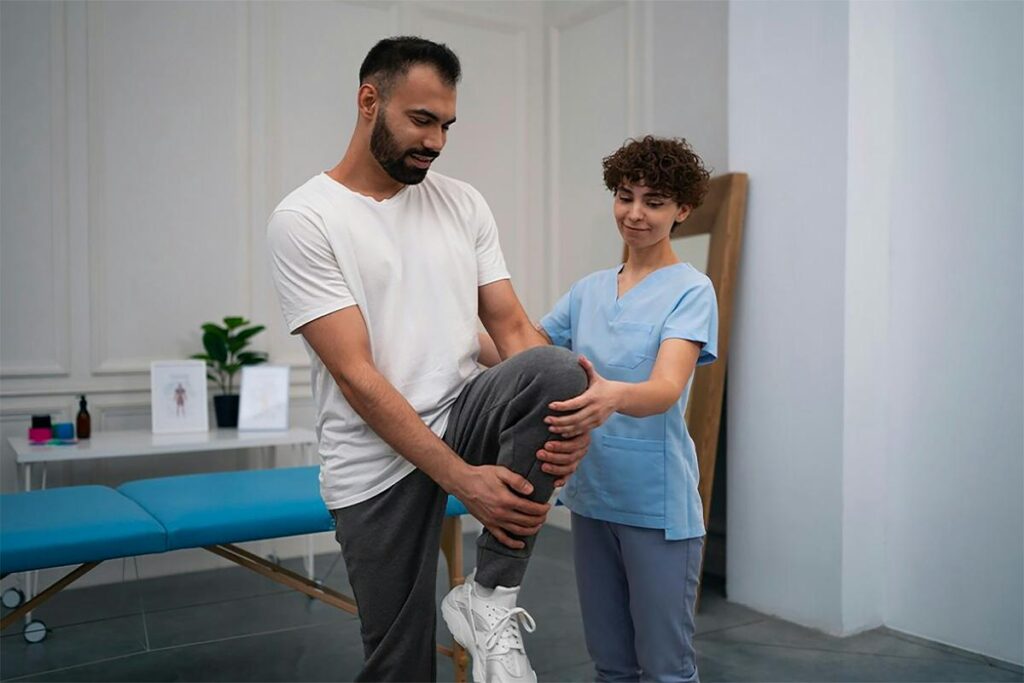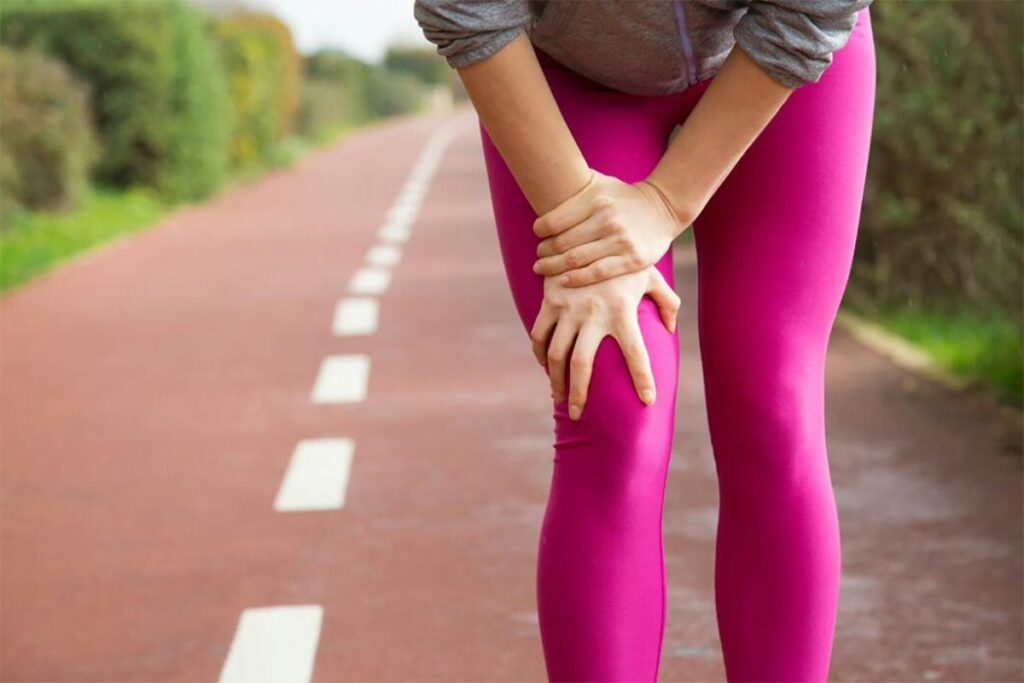Introduction
Lateral knee pain is a common affliction among runners, capable of derailing training plans and hindering performance. Characterized by discomfort on the outside of the knee, this condition prompts many to reconsider their running mechanics and training intensity. As a Doctor of Physical Therapy, I’m here to guide runners through the intricacies of lateral knee pain, from its origins to effective prevention and treatment strategies, ensuring a swift and safe return to the paths and tracks they love.
Understanding Lateral Knee Pain in Runners
Common Causes: In the running community, lateral knee pain is most frequently attributed to iliotibial band syndrome (ITBS). The iliotibial band (ITB), a ligament that runs along the outside of the thigh from the hip to the shin, can become tight and inflamed, leading to pain at its insertion point near the knee. This condition is often the result of overuse, particularly in runners who suddenly increase their mileage or intensity without adequate preparation. Other potential causes include biomechanical irregularities, such as overpronation or a lack of hip muscle strength, contributing to increased stress on the ITB.
Symptoms: Runners with ITBS typically report a sharp, burning pain or tightness on the outside of the knee, noticeable especially during running, and often worsening when descending hills or stairs. The pain may initially appear only at the beginning of a run and temporarily fade, only to reappear with increased intensity as mileage accumulates.
Prevention Tips
- Gradual Training Increases: Adhering to the 10% rule, where you increase your running distance or intensity by no more than 10% per week, can help prevent overuse injuries.
- Proper Warm-Up and Cool-Down: Incorporating dynamic stretches before running and static stretches afterwards can improve flexibility and reduce muscle tension.
- Strength Training: Focusing on hip and core strength can correct biomechanical imbalances that put additional strain on the ITB.
- Adequate Footwear: Ensuring that running shoes provide proper support and are replaced regularly can prevent biomechanical issues that contribute to lateral knee pain.
Effective Treatments

- Rest and Ice: Taking a break from running or reducing mileage can allow inflamed tissues to heal, while applying ice reduces swelling and pain.
- Physical Therapy: A physical therapist can offer personalized exercises to stretch and strengthen the ITB and surrounding muscles, improving flexibility and reducing tension on the knee.
- Running analysis: Looking at how you run can be a huge missing piece to getting rid of the pain once and for all. Reach out to us to schedule a running analysis today!
- Cross-Training: Engaging in low-impact activities like swimming or cycling can maintain fitness while reducing stress on the knee.
Recognizing When to Seek Professional Help
Persistent lateral knee pain that does not improve with rest, ice, and over-the-counter pain relievers warrants a professional evaluation. A healthcare provider can offer a definitive diagnosis and recommend a tailored treatment plan, potentially including advanced therapies or investigations into underlying biomechanical issues.
Conclusion
Lateral knee pain need not be a perpetual barrier to running. With an understanding of its causes and a commitment to preventive measures and proper treatment, runners can manage this condition effectively. Embracing a balanced approach to training, focusing on strength, flexibility, and appropriate rest, will support a healthy and enduring running journey.
References and Further Reading
Runners seeking more information on lateral knee pain can consult a variety of resources, including sports medicine literature, running forums, and physical therapy guides. Professional advice from a healthcare provider or physical therapist, however, should be considered paramount in managing and overcoming lateral knee pain.

